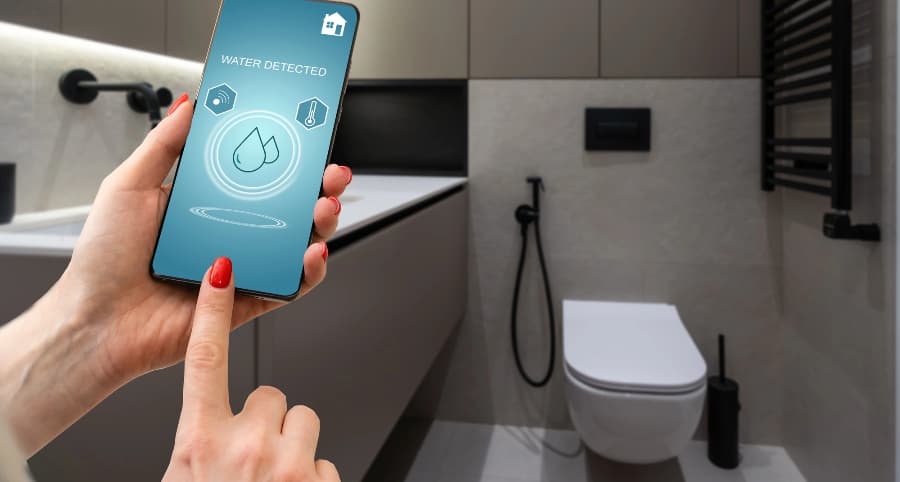How does a water sensor work and why install one with your Bloomington smart home?

One tiny leak in your home can cause big problems and thousands of dollars in damage. You must safeguard against this threat; luckily, there’s an easy way to accomplish this. A water sensor is a simple, effective, and budget-friendly solution. Explore how they work and why you should integrate water sensors into your Bloomington smart home.
How water sensors protect Bloomington your home
Water enters homes in various ways, whether from a plumbing failure, storm-related incident, appliance malfunction, or simple human error. However it occurs, you need to know right away, and this is how water sensors help. But how exactly do they work?
Most water sensors are conductive and work with two electrodes. When water enters the space between the electrodes, an electrical circuit is created, activating your alarm. You’ll also discover capacitive sensors that give off an electrical field. When water touches the conductive parts of these sensors, the field is interrupted, and your alarm activates. Optical sensors employing infrared LED light are another option.
Get more from your water sensor
Certain innovative water sensors offer even more defense as they use integrated temperature sensors. This is a smart way to prevent frozen pipes. If there’s an extreme reduction in temperature, you’ll be notified right away. Taking steps before pipes rupture will shield you from flooding and costly repairs.
Why incorporate water sensors into your Bloomington smart home?
When water issues occur, you must be alerted right away. You can attain this objective by incorporating water sensors into your smart home. Whether you’re there to hear the alarm or away, you’ll be sent an immediate alert on your cell phone. As an added benefit, your 24-hour monitoring agents will be notified. Every second is critical in a water emergency to control the damage and interruption to your household.
Where should you install water sensors?
Any area susceptible to water infiltration is a suitable place for water sensors. Place them in these spots:
- Bathrooms: Place near bathtubs or behind toilets.
- Basements: Water frequently seeps into basements via cracked walls or as a result of heavy rain or broken sump pumps.
- Next to water heaters or appliances: Any water-utilizing appliance might leak at some point.
- Underneath sinks: Water sensors are ideal for discovering plumbing leaks in locations hidden from view.
- Attics: Detect roof leaks early and avert expensive repairs.
Request water sensors with your Vivint smart home
Give your home the robust protection it deserves with Vivint’s modern devices. Our water sensors in Bloomington integrate with your Vivint mobile app to provide instant updates when your alarm is triggered. You also benefit from built-in temperature sensors to prevent pipe freezing. Discover all the smart home components available in Bloomington by dialing (309) 332-1140 today.
